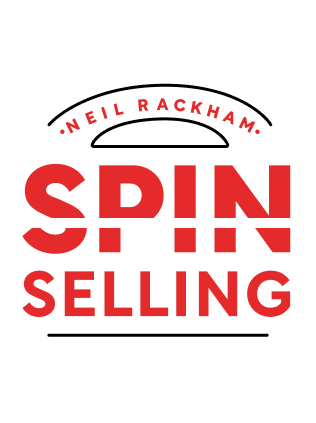

This article is an excerpt from the Shortform summary of "Spin Selling" by Neil Rackham. Shortform has the world's best summaries of books you should be reading.
Like this article? Sign up for a free trial here .
Are you looking for ways to better your sales relationships? How can sales relationships help you succeed in sales?
In all types of sales roles, your sales relationships are key to making successful sales. The SPIN selling method discusses how to cultivate sales relationships and make you a more successful salesperson.
Building Sales Relationships
Sales relationships take a lot of effort, no matter what type of sales relationship it is. From retail sales to major sales that take months, relationship building in sales is a key part of why sales work.
The Ongoing Relationship
Small sales: In a small sale, the sales rep and customer typically interact only once; they don’t develop a longer-term relationship.
Large sales: These sales require a long-term relationship with the customer for several reasons. There will be multiple calls to close the sale, and the rep will want to generate future sales with the same customer. In addition, there are usually follow-up needs, such as installation and support. As sales get bigger, the customer’s feelings toward the salesperson become a bigger factor—the person and product become inseparable to the customer. Because the psychology of a large sale is different, the rep must employ a different selling style.
Implied and Explicit Needs
There are two types of needs: implied and explicit. In small versus large sales, they play out differently.
- Implied needs are problems and frustrations expressed by the customer—for instance, “I’m not happy with the quality our press is producing,” or “Our system creates too much waste.”
- Explicit needs are strong wants or desires expressed by the customer—for example, “We need a more efficient system,” or “We have to cut our procurement costs.”
In small sales, implied needs can result in sales success without further development into explicit needs. In fact, the more implied needs a rep can uncover, the greater the chances of making a sale. In these sales, implied needs are “buying signals,” or behavioral cues that the customer wants to buy; however, in large sales, this isn’t the case.
In large sales, the relationship between implied needs (customer problems) and making a sale is weaker. The number of implied needs you uncover has no bearing on sales call results.
In a large sale, implied needs are a starting point requiring further development into explicit needs. The quantity of needs you uncover isn’t important; it’s how you develop them.
Generally speaking, closing techniques become less effective as the purchase price increases.
In another study of 47 sales reps at one company, researchers found that after training in closing, the reps employed closing strategies more often, but their sales success rate decreased by about 10%.
Besides the purchase price, two other factors may contribute to making hard closing techniques less effective in large sales: client sophistication and the ongoing client relationship:
- Research shows that “professional” buyers—purchasing agents and procurement officers—are resistant or even hostile to closing techniques because they don’t like being manipulated.
- Also, closing techniques can sour the ongoing relationship that’s usually part of larger sales. Customers don’t trust, or want to continue working with, a rep who tried to pressure them.
Sales Relationships and the Major Sale
Major sales require a more sophisticated sales relationship between sales rep and customer than is needed in small sales because they’re different from small sales in key ways:
Length of the Selling Cycle
Small sales: Sales often can be handled with one call in which the customer buys on the spot. The salesperson may push hard to refute objections and close successfully. This works if it’s a one-time interaction where establishing a good relationship isn’t critical. But if the customer delays a decision, resentment created by the pressure tactics can be difficult for the sales rep to overcome in a subsequent interaction. Further, the power of a strong sales pitch wanes in a few days.
Major sales: In contrast, a major sale often requires making many sales calls to a customer over months. Since the customer doesn’t make a decision on the first call, pressure tactics that create resentment won’t work and might kill the sale by making it impossible for the sales rep to establish an ongoing relationship. In major or multi-call sales, customer deliberations occur between calls in the rep’s absence.
Size of the Customer’s Commitment
Relationship building in sales leads up to a customer making a commitment.
Small sales: In a small sale, since the customer isn’t spending a lot of money, the rep doesn’t need to strongly emphasize the value of the product to the customer to get him to buy.
Major sales: Making a large buy is a bigger decision for the customer. The sales rep must heighten the perceived value in the product or service. In fact, increasing the perceived value is a critical selling skill in larger sales.
How Sales Relationships Help Get the Right Commitment
As part of the call planning process for a major sale, the seller needs to set objectives for the call. Objectives may include intangibles like relationship building, but also must specify what level of commitment the customer must make for the call to be a success. This is all a part of relationship building in sales.
In a small sale, success is easy to define—it’s a customer order. But in a major sale, fewer than 10% of calls result in an order. Your ultimate goal is a sale at some point down the road; in the short term, you’re looking for an indication of progress in each call, which can be tricky to define.
Just meeting vague objectives isn’t a sufficient standard for success. Further, it’s easy to rationalize that you’ve met your objectives—for instance, if you leave feeling good about the meeting, you may count it as a successful closing.
Sales relationships are an important part of working in sales. No matter what methods you use, it’s important to work on building good sales relationships.

———End of Preview———
Like what you just read? Read the rest of the world's best summary of Neil Rackham's "Spin Selling" at Shortform .
Here's what you'll find in our full Spin Selling summary :
- What the SPIN in SPIN Selling stands for
- How to demonstrate real value to the person you're selling to
- How to get commitment from your customer to close the sale fast






